Spine # k1405
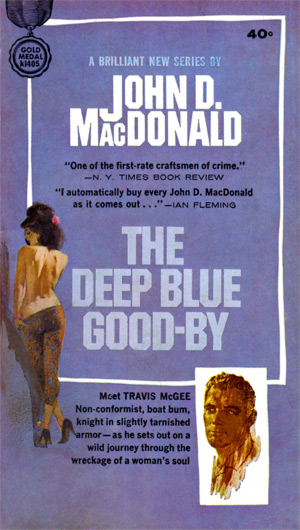
I am wary of a lot of things, such as plastic credit cards, payroll deductions, insurance programs, retirement benefits, savings accounts, Green Stamps, time clocks, newspapers, mortgages, sermons, miracle fabrics, deodorants, check lists, time payments, political parties, lending libraries, television, actresses, junior chambers of commerce, pageants, progress, and manifest destiny. I am wary of the whole dreary deadening structured mess we have built into such a glittering top-heavy structure that there is nothing left to see but the glitter, and the brute routines of maintaining it.
John D. MacDonald, The Deep Blue Good-By
Travis McGee is a Florida man who avoids the tyrannies of everyday life. A self-described “beach bum”, he abhors the idea of a 9 to 5 job. He doesn’t partake in the rituals of consumerism and loathes debt spending. His home isn’t a postwar ranch-style dwelling, stuck in the middle of suburbia. It’s a houseboat called The Busted Flush which he won in a card game. That’s where he sits, drinking beers, entertaining women while shying away from modernity. He’s not a deadbeat or a loser. Just a dude living by his own code.
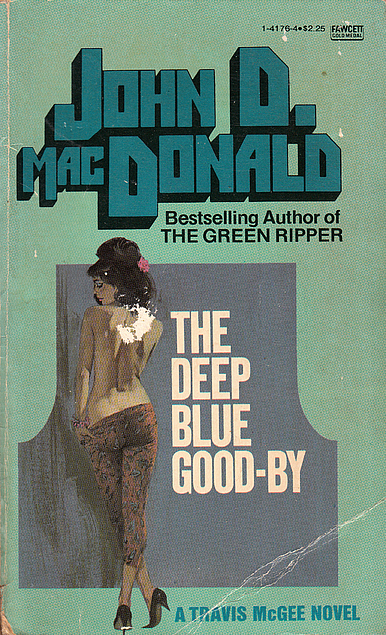
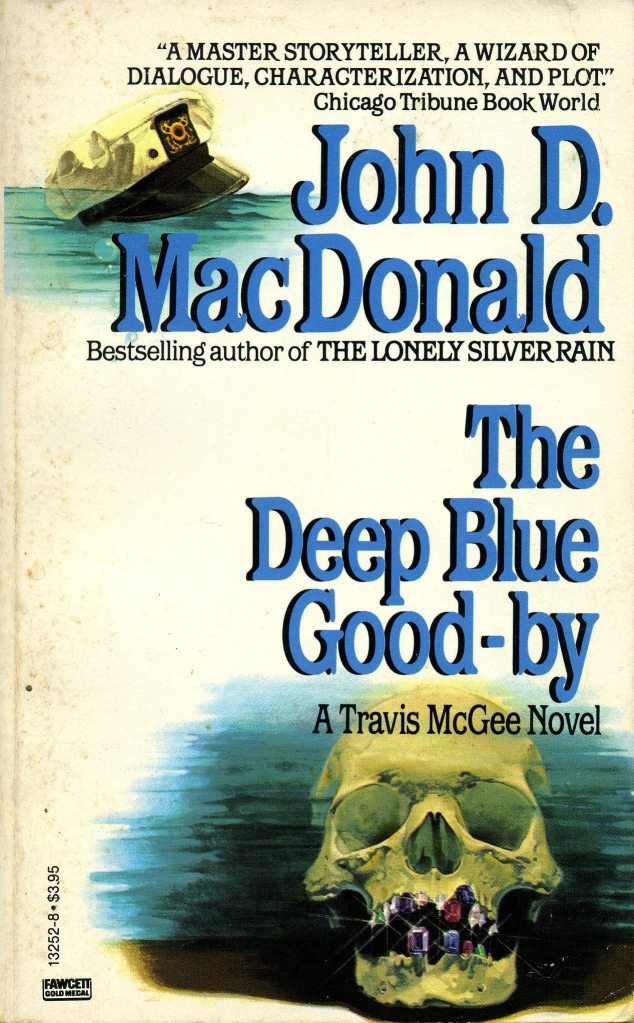
Providing a plot recap for The Deep Blue Good-By is pointless as it’s one of the most famous crime novels of all-time. The main character, Travis McGee, is a P.I. hall of famer of such stature that if there were a “Mount Rushmore” for hardboiled detectives, he would be a contender for having his face chiseled into the mountain.
The McGee series has influenced many modern best-selling authors including Stephen King, Carl Hiaasen, Dean Koontz, Tim Dorsey, Lee Child, and George Pelecanos whose two part Spero Lucas series reads like cover albums of MacDonald’s greatest hits.


But before Travis McGee was an icon, he was a nonconformist type of character that was popular in the 1960s.
Throughout the book, McGee rails against conventions and institutions without being radical. He’s not a Marxist as getting paid a percentage to recover lost valuables is a private enterprise. He drinks, but doesn’t smoke weed or drop acid. McGee has sex, but hardly practices “free love”. He’s a veteran and doesn’t demonstrate against America’s wars. He’s full of contempt but is not an activist. He lives on the outskirts and only dips into mainstream society when he can get cash off a square who got into a jam.
Released in 1964, The Deep Blue Good-By’s anti-establishment themes reflect the zeitgeist of “Sixties” America as this was when many “outsiders” gained notoriety. The Merry Pranksters drove their DayGlo slathered bus, “Further”, from California to New York City. The Hippies started doing their thing. Muhammad Ali beat Sonny Liston. The Beatles came to America and Bob Dylan got them high.
This idea of the “outsider” was popular in the 1964 and McGee found himself in fine literary company.
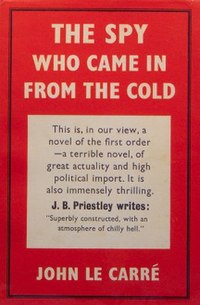
The most significant of literary outsider of 1964 was Alec Leamas from John Le Carre’s The Spy Who Came in from the Cold. Leamas is a spy whose been fighting the good fight for far too long. He’s burned out and wants to end his career as a cold warrior. He’s on the outside as he lost his belief in the intelligence service while his colleagues maintain their enthusiasm and eagerly look to secure glory as seen in Le Carre’s follow up novel The Looking Glass War.
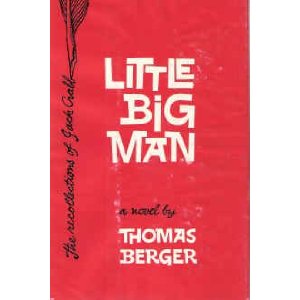
Another 1964 release, Thomas Berger’s Little Big Man, created a memorable “outsider” character in Jack Crabb. A white man raised by Cheyenne, Crabb drifts between both cultures and acts in a variety of duties that are typical tropes of the western genre. Since he isn’t firmly routed in either world, Crabb, not unlike McGee, observes the shortcomings and corruptions of the societal structures around him.
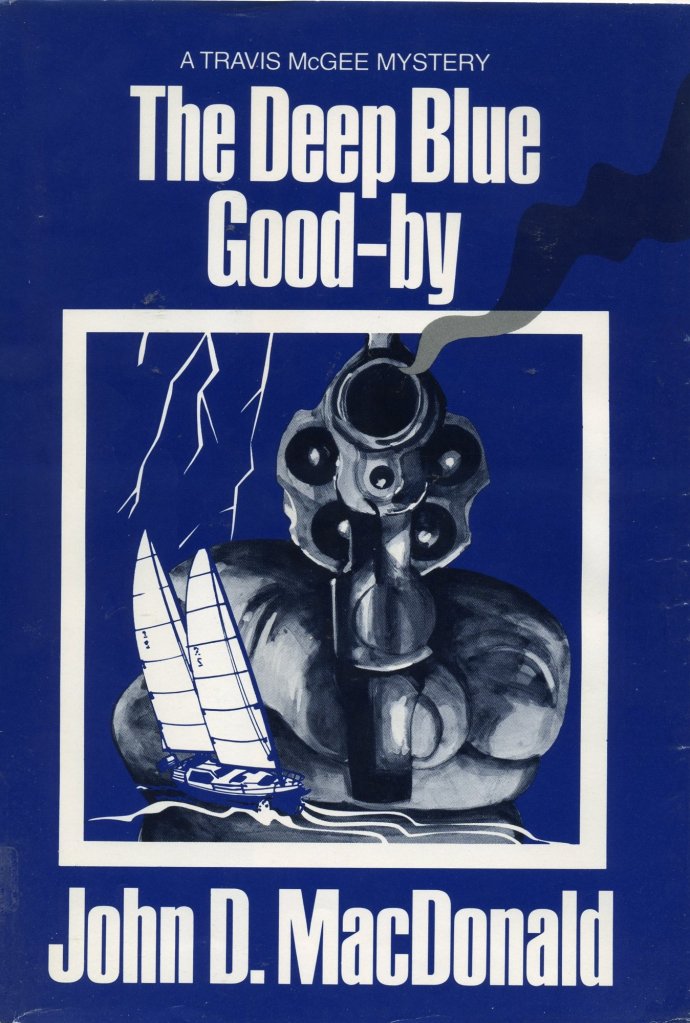
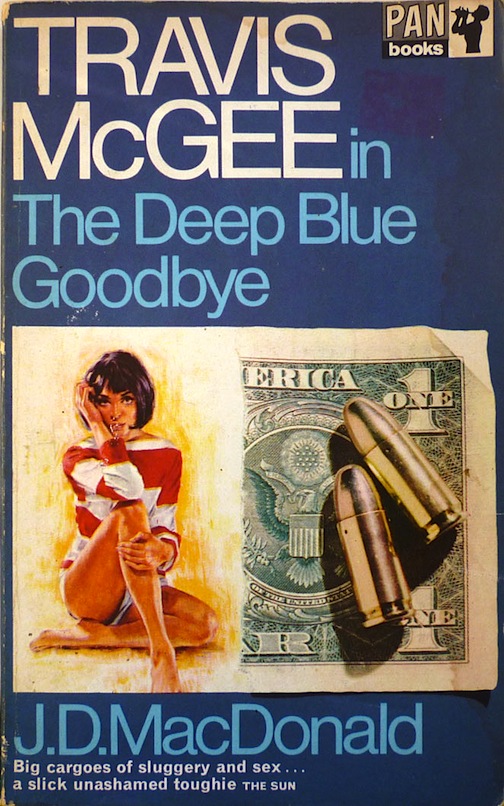
Travis McGee is sort of a gumbo made up of Leamas and Crabb. He lives on the outskirts of society, is burned out by many of its mainstream conventions, and finds freedom in the pleasures of his unique way of life.
While The Deep Blue Good-By has connecting tissue with the forces that led to this paradigm shift, it’s much too tame to be provocative. This likely explains why the book sold so well. It celebrated the “outsider” without going full counterculture.
C.D. Baxter’s Quick Review of The Deep Blue Good-By
Story – Great; Classic
Cover Eye Candy – Memorable
Platinum Pulp Level
Reprint Available by Random House
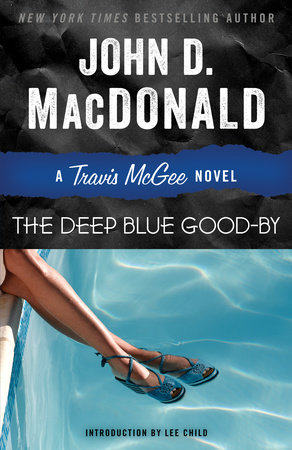

2 responses to “The Deep Blue Good-By (1964)”
[…] That’s his beat. Watching McGee navigate NYC, especially in the follow up to the outstanding Deep Blue Good-By, was boring and disappointing. There are times when he exhibits a contempt for the city but his […]
LikeLike
You left off your his lecturing about society’s destruction of the environment, which is one of the biggest themes of the books.
LikeLike